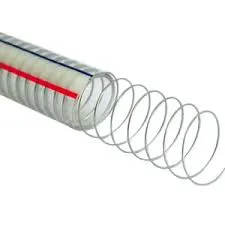types of hose in fire service
Types of Hose in Fire Service
Fire service hoses are essential tools for firefighters, enabling them to deliver water or fire retardant to extinguish fires effectively. Over the years, different types of hoses have been developed to meet various needs and challenges in firefighting. Understanding these hoses is crucial for efficient fire management and ensuring firefighter safety. In this article, we will explore the major types of hoses used in fire service, their characteristics, and their specific applications.
1. Attack Hoses
Attack hoses are the most commonly used hoses in firefighting operations. They are designed for direct water delivery from the fire engine to the fire scene. The primary purpose of attack hoses is to extinguish flames quickly and efficiently. These hoses are typically made of reinforced synthetic material, making them lightweight yet durable.
Attack hoses come in various diameters, usually ranging from 1.5 inches to 3 inches, allowing for varying flow rates depending on the fire's intensity. They can be classified into two main categories - Pre-Connected Hoses These are already connected to the fire engine and are readily available for immediate deployment. - Drag Hoses These hoses are rolled up and must be deployed at the fire site. They provide more flexibility in terms of maneuvering.
2. Supply Hoses
Supply hoses, also known as water supply hoses, transport water from a hydrant or other water sources to the fire engine or an operational pumping unit. These hoses have larger diameters, commonly between 4 inches to 6 inches, allowing for a substantial volume of water to be moved quickly.
A critical feature of supply hoses is their ability to withstand high pressures since they are often used when connecting to fire hydrants or other water sources. They are typically constructed from a durable, abrasion-resistant material to prevent damage while being deployed in different environments. A common type of supply hose is the Large-Diameter Hose (LDH), which is crucial for water supply operations in large-scale incidents.
3. Jumper Hoses
types of hose in fire service

Jumper hoses are short lengths of hose used to connect different hose sections, particularly during operations involving water supply. They are typically used to facilitate hose connections in tight spaces or when navigating around obstacles. Jumper hoses are available in various lengths, generally around 2-5 feet.
These hoses are vital in maintaining efficient water supply without compromising the pressure and flow needed for firefighting. They can also act as a bridge between two different hoses of varying diameters.
4. Wildland Fire Hoses
For firefighting in rural and wildland areas, specialized hoses are required. Wildland fire hoses are typically lightweight and made of materials that can withstand harsh terrain and environmental conditions. They are often smaller in diameter, generally around 1 inch to 1.5 inches, which makes them easier to carry and maneuver in dense vegetation.
These hoses are designed to be highly flexible and resistant to abrasions, allowing firefighters to navigate through rugged landscapes effectively. They often come with unique fittings to connect to portable pumps used in wildland operations.
5. Booster Hoses
Booster hoses are primarily used for quick, initial attack purposes or for small fires. They are compact and can be easily stored on fire apparatus, making them readily available for swift deployment. Typically, booster hoses are 1 inch in diameter and can handle lower pressures, making them ideal for Class A fires, such as those involving flammable solids.
Conclusion
Each type of fire service hose is designed for specific conditions and challenges, ensuring that firefighters can combat fires effectively. Understanding the different types of hoses—attack, supply, jumper, wildland, and booster—enables fire professionals to select the appropriate equipment for various situations. As technology advances and firefighting tactics evolve, the significance of these hoses remains paramount in safeguarding lives and property amidst emergencies.
-
Unrivaled Performance and Applications of PU Pneumatic Hoses and TubesNewsJun.11,2025
-
The Transparent World of Industrial Tubing and Hosing SolutionsNewsJun.11,2025
-
The Intricate World of Pneumatic Conduits: Tubes and HosesNewsJun.11,2025
-
The Dynamic Landscape of Pneumatic Conduits: Unraveling Key ComponentsNewsJun.11,2025
-
The Diverse Applications and Significance of Transparent PVC TubingNewsJun.11,2025
-
High - Pressure Pneumatic Tubing and Systems: An In - Depth LookNewsJun.11,2025














